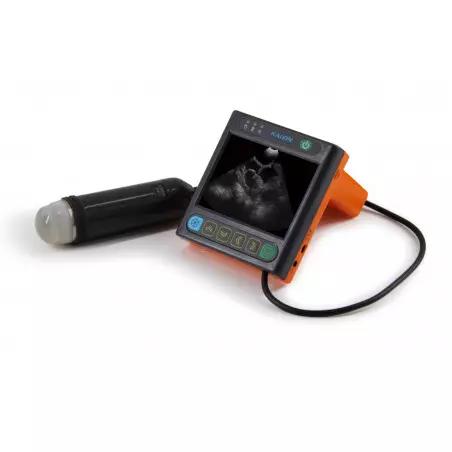Introduction
Soybean oil is a vegetable oil extracted from soybeans (Glycine max). It is one of the most widely used vegetable oils in the swine industry and comes from the oil extraction industry, mainly for human consumption. Although there are two methods of extraction of soybean oil, 1) physical or mechanical extraction or 2) chemical extraction with solvents (hexane), the oil that reaches the feed manufacturing industry is mainly that from chemical extraction since the use of oils from physical extraction is not justified due to direct competition with human consumption. Solvent extraction also allows a higher yield than the physical method.

The soybean oil used by the feed industry is mainly crude or crude degummed as the growing interest in soybean lecithins has increased the availability of crude degummed soybean oil for feed manufacture. Crude soybean oil contains gums that are very rich in choline, phospholipids, antioxidants, and vitamin E, which improves the digestibility and storage stability of the oil. It also contains considerable levels of sterols, but its cholesterol is negligible. The degumming process primarily separates water-soluble phospholipids, phosphatidylcholine or polyenylphosphatidylcholine (also called lecithin). Part of the choline, polyphenols, and vitamin E are lost during this process,
The final quality of the oil, whether crude or degummed, largely depends on the original quality of the soybean, the origin of the crop, the time elapsed between harvesting and processing, as well as the handling during storage and transport (loading, conveyor belts, silo conditions, etc.), since all these factors are pro-oxidative and work against the final quality and stability of the oil. For this reason, in some cases, at the request of the customer or end user, exogenous antioxidants are supplemented. The energy value of soybean oil due to its degree of unsaturation is higher than other vegetable fats with a higher degree of saturation.
Soybean oil contains considerable proportions of oleic acid and linoleic acid. There are small amounts of palmitic, linolenic, and stearic acids and traces of palmitoleic acid and myristic acid. This composition determines the ratio between saturated and unsaturated fatty acids. It is used as a source of energy in all physiological stages of pigs, although it is of greater interest for suckling piglets or at weaning (>=5%), due to its degree of unsaturation and its digestibility. The energy value of soybean oil will basically depend on the amount of total fat (saponifiable fraction), since moisture, impurities, and the unsaponifiable fraction have no energy value (considered the non-elutable fraction if we add oxidation products).
Comparative study of nutritional values
The systems used in the comparison are: FEDNA (Spain), CVB (the Netherlands), INRA (France), NRC (United States), and Brasil (Brazil).
| FEDNA | CVB | INRA | NRC | BRASIL | |
| DM (%) | - | 99.5 | - | - | 99.6 |
| Energy value (kcal/kg) | |||||
| Crude protein (%) | - | - | - | - | - |
| Ether extract (%) | 98.5 | 99.5 | 97.6 | 95.2 | 99.6 |
| Crude fiber (%) | - | - | - | - | - |
| Starch (%) | - | - | - | - | - |
| Sugars (%) | - | - | - | - | - |
| DE growth | 8690 | - | 7970 | 8749 | 8600 |
| ME growth | - | - | 7920 | 8574 | 8300 |
| NE growth | 8170 | 8074 | 7110 | 7545 | 7364 |
| NE sows | 8170 | 8074 | 7110 | 7545 | 7364 |
| Fatty acid profile | |||||
| Fat digestibility coefficient (%) | - | 95 | 85 | 95 | 88.5 |
| Amino acid composition (% EE) | |||||
| Myristic acid (C14:0) | - | 0.2 | 0.1 | 0.1 | 0.1 |
| Palmitic acid (C16:0) | 9.5 | 11.0 | 10.5 | 10.3 | 9.76 |
| Palmitoleic acid (C16:1) | 0.2 | 0.2 | 0.2 | 0.2 | 0.20 |
| Stearic acid (C18:0) | 4.0 | 4.0 | 3.8 | 3.8 | 3.77 |
| Oleic acid (C18:1) | 22.0 | 22.0 | 21.7 | 22.8 | 23.32 |
| Linoleic acid (C18:2) | 54.0 | 54.1 | 53.1 | 51.0 | 52.78 |
| Linolenic acid (C18:3n6) | 7.3 | 8.0 | 7.4 | 6.8 | 6.97 |
| Other properties | |||||
| Iodine value | 130 | - | - | 132 | - |
| Titer | 21 | - | - | - | - |
| Saponification value | 192 | - | - | - | - |
| Saturated/Unsaturated | 0.16 | 0.18 | 0.17 | 0.18 | 0.16 |
Soybean oil is usually very stable and differences could be associated mainly with the quality of the soybean and the time and treatment received between harvest and extraction, since this can affect the quality of the final product extracted, as well as the processing, since chemically it would be possible considering the differences observed both at the moisture and ethereal extract levels. However, only CVB and BRASIL present values for moisture and fat content (% of ethereal extract, EE), although this can be estimated as the sum of the fatty acid profile. For oil, everything that is not total fat would be associated with moisture. In this sense, neither CVB nor BRASIL show any difference between dry matter and total fat content, suggesting that these evaluation systems do not take into account the presence of other compounds that are not fat (e.g. impurities and unsaponifiables).
The range in NE (kcal/kg) proposed by the different evaluation systems oscillates between 1060 kcal, with INRA presenting the lowest value (7110 kcal/kg) and FEDNA the highest (8170 kcal/kg). These changes in the NE value are not justified by the variations presented in terms of DM and EE, and could be related to the quality of the bean used, also subject to the conditions of handling and treatment prior to extraction, since in no case are other parameters presented that would determine its energy value, such as water content, impurities, unsaponifiables, quantity of free fatty acids (FFA) and oxidation products. With the exception of INRA which values all fats of vegetable origin equally, the rest of the European evaluation systems (FEDNA and CVB) present the highest values of NE compared to BRASIL and NRC, which give lower energy values, being countries with production systems highly linked to soybean oil as a source of energy. A positive correlation (r2 > 0.85) was observed between fat digestibility coefficients and final energy value. With the exception of FEDNA and CVB, it is surprising that the rest of the evaluation systems present an ME value for soybean oil between 0.62 and 3.50% lower than the DE value, although losses through urine or in the form of gases should be insignificant, as is the case with other fat sources.
The fatty acid profiles and amounts are very similar between the evaluation systems (deviations between 0.05 and 1.12) with the exception of NRC and CVB which present higher values of saturated fatty acids with respect to the average of the rest of the systems (+11% myristic acid, +7% palmitic, and 1% stearic) and less variable amounts of unsaturated fatty acids, linoleic (-1%) and linolenic (-2%) with the exception of palmitoleic and oleic which show no differences with respect to FEDNA, BRASIL, and INRA. These changes will determine the ratio between saturated and unsaturated fatty acids of CVB and NRC (0.18), INRA (0.17), FEDNA, and BRASIL (0.16). In this regard, the role of animal feeding may explain the origin of this difference.
Some evaluation systems (FEDNA, NRC) present other reference indexes (iodine value as an indicator of the degree of saturation, titer or melting point, and saponification index) that complement, but do not expand the information already provided with the fatty acid profile. On the other hand, no system indicates the content of free fatty acids, although it is a value that is usually incorporated in the prediction equations of the NE value. Nor is there any reference to the joint value of moisture, impurities and unsaponifiable (MIU) as an index or measure inversely related to the energy value and of course to separate between categories and quality depending on whether it is a crude or degummed crude oil, which should be directly specified in the supplier's labeling.
Recent findings
1. Soybean oil supplementation for sows in the first three days after farrowing
The aim of this study was to evaluate the effect of soybean oil supplementation to sows in the first three days after farrowing to save piglet fat reserves through the higher nutritional intake of sow milk. In total, 604.5, 750, 1000, 1250 and 1500 g of soybean oil were provided for each sow during the three days of supplementation. The soybean oil supplementation for sows in the first three days after farrowing does not influence performance parameters, reproduction and milk fat of the sows and mortality and fall-back rate of the piglets.
2. Dietary soybean oil modulates fatty acid composition of pork

The impact of soybean oil level on performance and fatty acid profile of backfat and longissimus lumborum muscle of gilts was evaluated. Forty-eight gilts with an initial weight of 21.75 ± 0.138 kg and final weight of 98.65 ± 2.106 kg were subjected to one of the following six dietary soybean oil inclusions (0.00, 1.086, 2.173, 3.259, 4.345, and 5.432%). The inclusion of soybean oil modified the lipid profile of backfat and muscle, reduced saturated and monounsaturated fatty acids, and increased polyunsaturated fatty acids concentration, mainly linoleic and α-linolenic acids. Increasing dietary soybean oil inclusion decreased atherogenic and thrombogenic indexes, and the omega-6:omega-3 ratio of the backfat and longissimus lumborum muscle. The level of soybean oil in swine diets influenced backfat and longissimus lumborum lipid profile.
3. Supplementation of different fat sources affects growth performance and carcass composition of finishing pigs
Different energy values and fatty acid composition may affect growth performance and carcass composition of grow-finishing pigs. A higher net energy was recently reported in choice white grease compared with soybean oil. Two experiments were conducted to determine whether practical responses confirm that difference between choice white grease and soybean oil, and to extend the observations to other fat sources. It was reported that inclusion of 6% dietary fat improved feed efficiency of finishing pigs, while different fats produced different practical results that may be consistent with their different energy values. Results from the early stage indicate that dietary fats with relatively more saturated fatty acids may provide greater energy than those with relatively more unsaturated fatty acids for growing pigs.
4. Effect of timing of post-weaning supplementation of soybean oil and exogenous lipase on growth performance, blood biochemical profiles, intestinal morphology and caecal microbial composition in weaning pigs
The aim of this experiment was to investigate the effects of dietary supplementation of different levels of soybean oil and exogenous lipase on growth performance, serum biochemical indices and caecal microbial diversity and similarity in weaning pigs. Four dietary treatments were arranged in a 2 × 2 factorial arrangement in a completely randomised experiment. The first factor was soybean oil level (2.5% or 5%), and the second factor was lipase level (0 or 200 g/t). Results from this experiment suggest dietary supplementation of 5% soybean oil could improve growth performance by regulating the glycolipid metabolism and diversity of bacterial in weaning piglets compared to performance on a dietary level of 2.5% soybean oil.
5. Effect of duration of dietary rapeseed and soybean oil feeding on physical characteristics, fatty acid profile, and oxidative stability of pig backfat
This study compared the effect of two vegetable oils and their feeding duration on pig backfat quality. Pigs were fed a diet supplemented (40 g/kg) with rapeseed or soybean oil for 2, 4 or 6 weeks before slaughter at 152 d of age. The supplementation of both vegetable oils in the diets for 6 weeks negatively changed backfat consistency. With the supplementation of oil in the diet for 6 weeks until slaughter, the value of lightness and perforation part of backfat significantly decreased. A dose of 40 g/kg of rapeseed oil in the last 4 weeks before slaughter is sufficient for improving the fatty acid profile without adversely affecting the consistency of the backfat. In conclusion, the feeding of rapeseed oil for 4 weeks before slaughter is sufficient for improving the FA profile without negative effect on the consistency of the backfat.
References
FEDNA: http://www.fundacionfedna.org/
FND. CVB Feed Table 2016. http://www.cvbdiervoeding.nl
INRA. Sauvant D, Perez, J, y Tran G, 2004, Tables de composition et de valeur nutritive des matières premières destinées aux animaux d'élevage,
NRC 1982. United States-Canadian Tables of Feed Composition: Nutritional Data for United States and Canadian Feeds, Third Revision.
Rostagno, H,S, 2017, Tablas Brasileñas para aves y cerdos, Composición de Alimentos y Requerimientos Nutricionales, 4° Ed









